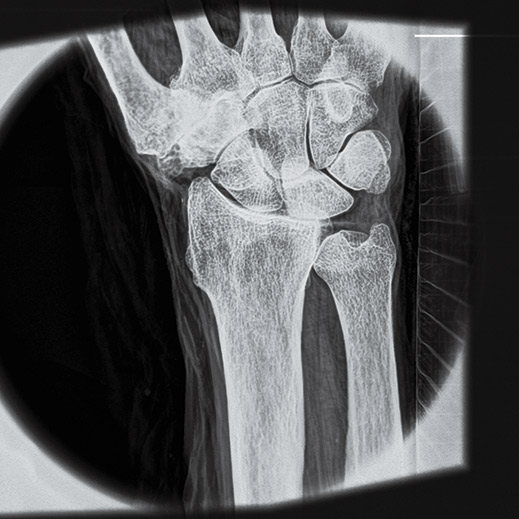X-rays are a crucial tool of medicine, but to image the body’s soft tissues they generally require contrast-enhancing agents that must be swallowed or injected, and their resolution is limited. But researchers at MIT and Massachusetts General Hospital have come up with a new approach that could dramatically change that, providing the most detailed images ever—including clear views of soft tissue without contrast agents.

The new technology could be smaller and cheaper than conventional systems, says Luis Velásquez-García, a principal research scientist at MIT’s Microsystems Technology Laboratories. It could also deliver higher resolution and reduce patients’ radiation exposure. The key is to produce coherent beams of x-rays from an array of micrometer-size point sources instead of a spread of beams from a single large point, as in conventional systems.
Velásquez-García says the technology would provide a unique view of the body’s organ systems. A simulation of the new system that the team performed with an eye from a cadaver clearly showed “all the structures, the lens, and the cornea,” he says.
Adapting hardware developed for microchip manufacturing, the researchers produced a nanostructured surface with an array of tiny tips, each of which can emit a beam of electrons. These, in turn, pass through a microstructured plate that emits a beam of x-rays. The resulting coherent beam is equivalent to something that can now be produced only by “incredibly expensive” systems at linear particle accelerators, Velásquez-García says. Those facilities were the first to demonstrate the diagnostic power of coherent beams—for example, revealing a cancerous tumor by showing the blood vessels supplying it.
“You can’t have a linear accelerator in every hospital,” he says. But the new system could potentially improve the resolution of conventional x-ray imagery by a factor of 100 with hardware that costs orders of magnitude less, he says.
The technology could also be applied beyond medicine. For example, it could be useful in airport baggage screening, differentiating a bottle of shampoo from a container of explosives.
Keep Reading
Most Popular
Large language models can do jaw-dropping things. But nobody knows exactly why.
And that's a problem. Figuring it out is one of the biggest scientific puzzles of our time and a crucial step towards controlling more powerful future models.
How scientists traced a mysterious covid case back to six toilets
When wastewater surveillance turns into a hunt for a single infected individual, the ethics get tricky.
The problem with plug-in hybrids? Their drivers.
Plug-in hybrids are often sold as a transition to EVs, but new data from Europe shows we’re still underestimating the emissions they produce.
Google DeepMind’s new generative model makes Super Mario–like games from scratch
Genie learns how to control games by watching hours and hours of video. It could help train next-gen robots too.
Stay connected
Get the latest updates from
MIT Technology Review
Discover special offers, top stories, upcoming events, and more.